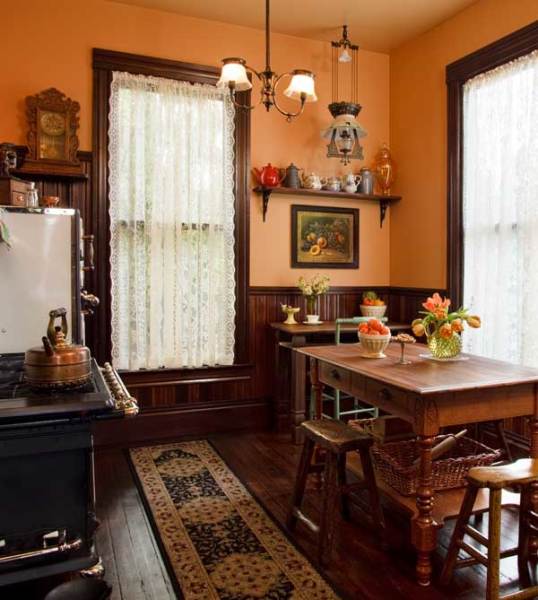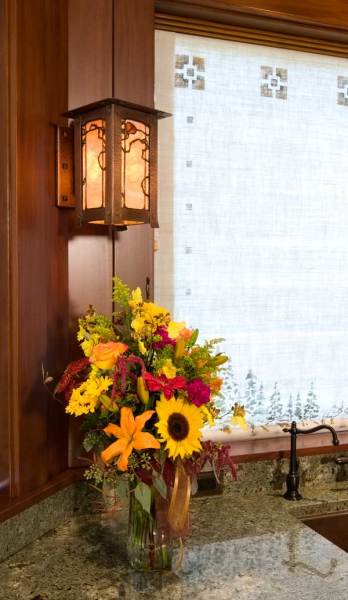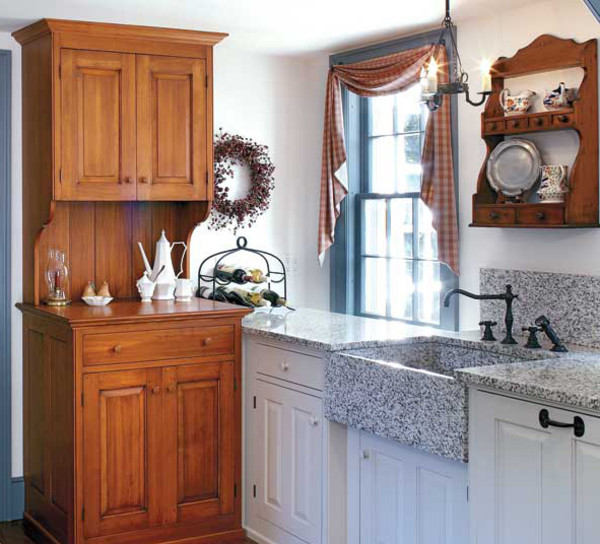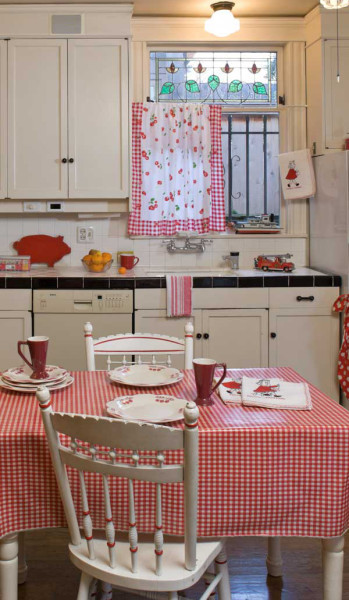Shirred lace panels suit big windows in a Victorian kitchen. (Photo: Blackstone Edge)
Window treatments, I’ve noticed, are often left out in kitchen renovations, even when other elements are carefully chosen for a period-inspired look. Curtains or shades give a more finished appearance, in addition to being practical for regulating light and privacy.
Kitchen windows present a few challenges. The windows all may not match; maybe there are casements over the sink, large double-hungs in the eating area, and a glass door to the mudroom. Go with what’s practical in each case, tying the treatments together with material or color, or a common trim or stencil. Ann Wallace of Prairie Textiles suggests bottom-only café curtains over the sink, for example, with full-length curtains in the eating area, and a panel (held by rods at the top and bottom) for the window in the door.
Roman shades like these by Dianne Ayres are practical. (Photo: Doug Keister)
Another consideration is location in the room. Curtains should not be near the stove or too close to splash-back from the sink. Judy Soccio of Couture Window Art says to keep treatments over the sink short—and that includes any cords. Think about how much and what you cook, too: If odors and grease are an issue, Judy says, choose washable fabrics or those with Crypton or Microban.
Simple, time-tested treatments that work for most periods include a valance or shaped pelmet (cornice), café curtains, sheers, roller and Roman shades, and Venetian blinds. If you have a pretty view or little room for curtains, a valance alone is enough to dress the window. A valance or pelmet also hides the working parts at the top of blinds and shades. Café (half, or sash) curtains can be stacked, but Ann Wallace says they are most often used only on the bottom sash, where they provide privacy without blocking too much light.
Simple lined swags finish windows in an early house. (Photo: Greg Premru)
Small curtains are also easy to remove for washing. (Just sew a rod pocket into them and shirr onto a simple rod. Dianne Ayres of Arts & Crafts Period Textiles says tab-top curtains are not a period treatment, and are hard to slide, besides.)
In the 19th century, “glass curtains” were sheers used next to the glass in layered treatments, and by themselves in service rooms. Near-sheer fabrics include lace, an easy way to add subtle pattern and class to plain windows. Dan Cooper of Cooper Lace suggests hanging panels from an inexpensive tension rod—a white one virtually disappears when tucked inside the lace.
A pocket and tension rod turned a tea towel into a curtain. (Photo: William Wright)
Ubiquitous roller shades can be rolled up, pulled down, or left in-between, providing the best light control and the most privacy. The old-fashioned spring-loaded ones eliminate cords. You don’t have to settle for white vinyl, or even plain fabric. Diane Hayes of Alameda Shade Shop suggests adding a special fringe or a scallop treatment at the bottom, or a stenciled decoration in paint.
For an early or architectural look, consider interior wooden shutters. Make sure they aren’t blocked by the faucet!







